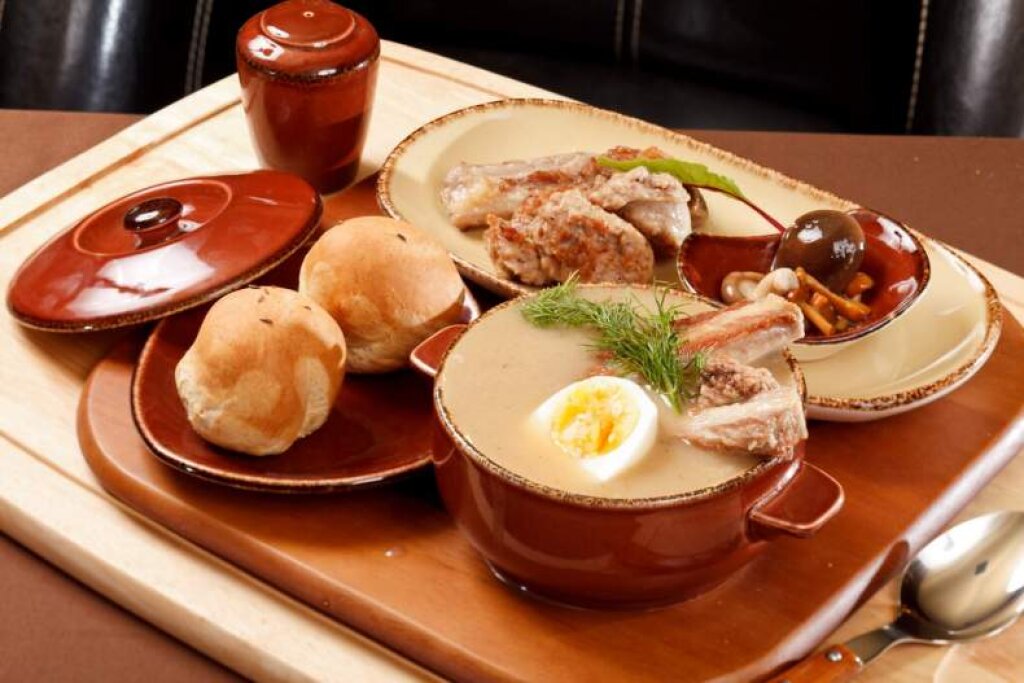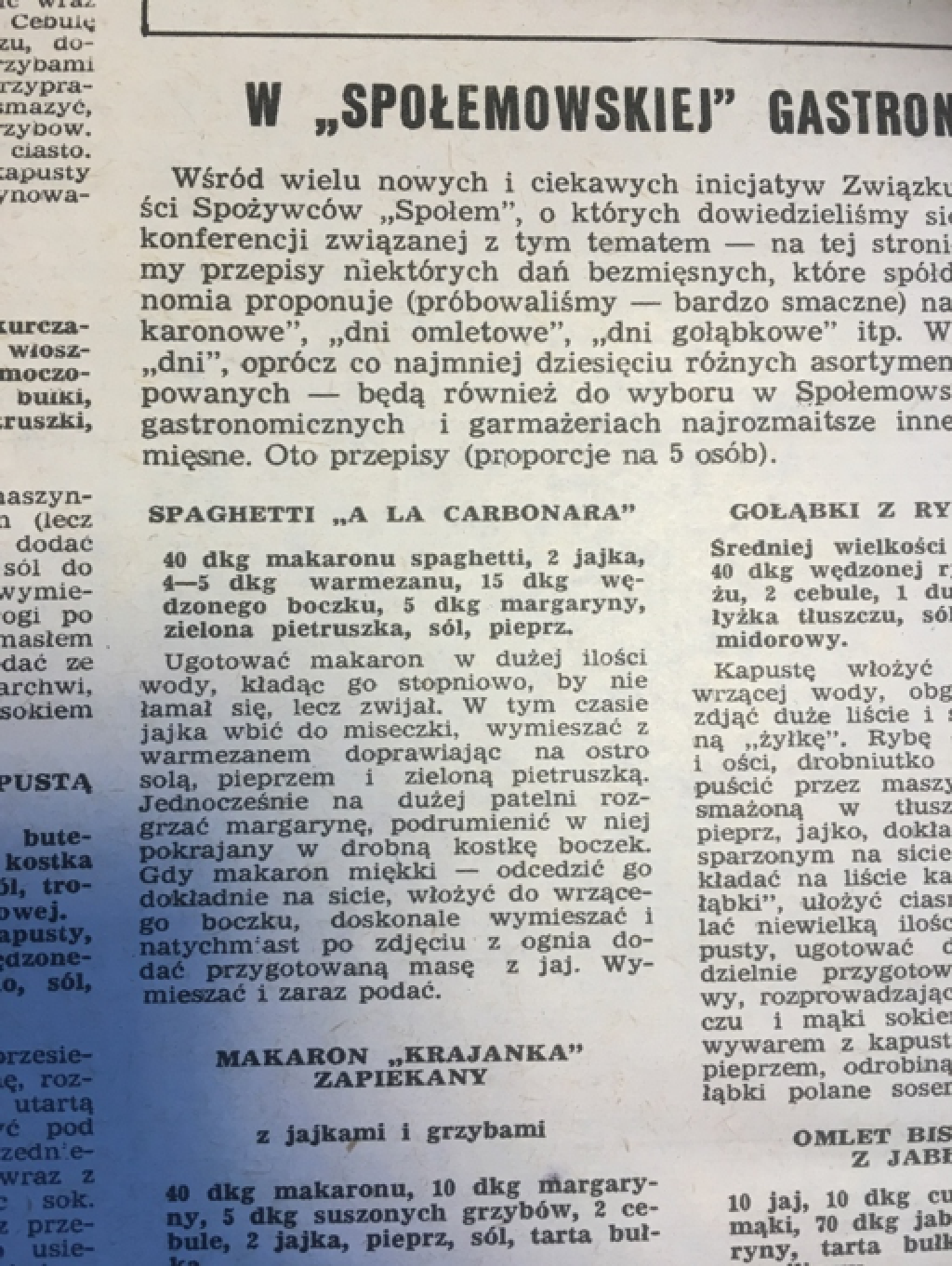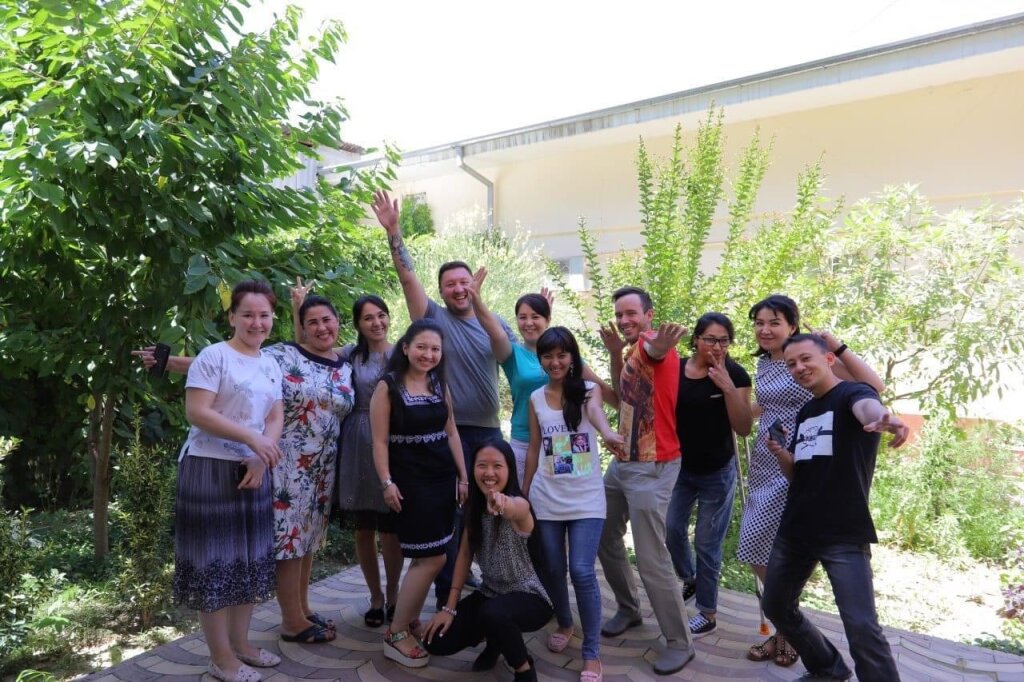Rebekah Hodge is an M.A. student in the Food Studies Program at NYU Steinhardt, where she studies the use of food as a weapon of war, focusing primarily on the twentieth century.
In the 1950s, American diplomats and business leaders travelled to Moscow for an exhibition of the newest and greatest American inventions. Made famous by the Kitchen Debate between Richard Nixon and Nikita Khrushchev, the exhibition launched a deeper fascination with life in the West.
While Soviet and Soviet-sympathetic leaders wanted to stamp out interest in the West, a growing interest in life beyond the Iron Curtain, fed by magazines and weekly publications that began to publish recipes and food-focused articles, gave readers a sense of what it would be like to live and eat outside of Soviet influence.
Kobieta í źycie [Woman and Life],a Polish weekly magazine targeted to women, featured stories about American celebrities, advertisements for American-like products, such as fancy blenders, juicers and stand mixers, the prelude to the now-infamous KitchenAid mixer.
Not only could Polish-speaking readers see ads for Western-style goods, but they were supplied with recipes aiming to approximate some of the foods they were missing in Eastern-Bloc Poland. Sometimes these recipes combined traditional Polish recipes with Western flavors; at other times, they would adapt traditional "Western" recipes for a Polish audience.
From spaghetti carbonara and Greek chicken to an American omelet and Roquefort butter, Kobieta's readership was exposed to a West that was likely unfamiliar to them but offered them a taste of the West in a very real way. Exposes on how to make homemade tortillas and what makes an excellent curry offered further insights into a world that was supposed to be off-limits to the Eastern Bloc.
The recipes often offered suggestions for substitutions for potentially difficult-to-find items like butter. In one recipe — Polish-French croissants — the magazine recommends that those adventurous readers who want to take on this recipe substitute palm oil for butter. While the resulting croissants may not be the same flaky masterpieces offered on the streets of France, they might still offer a semblance of an otherwise inaccessible, but tantalizingly foreign, world.
While food did not cause the end of the Cold War, it did offer a softening of the minds. Readers of magazines like Kobieta í źycie were exposed to flavors and visions of what life could be like in the West. This exposure likely bolstered the burgeoning discontent already evident across the late-Soviet world, as millions grew weary of long lines for food and the empty shelves in grocery stores. Although it may not have directly led to detente, food was one catalyst among many for the change of minds that would ultimately lead to the disintegration of the Soviet sphere of influence.





